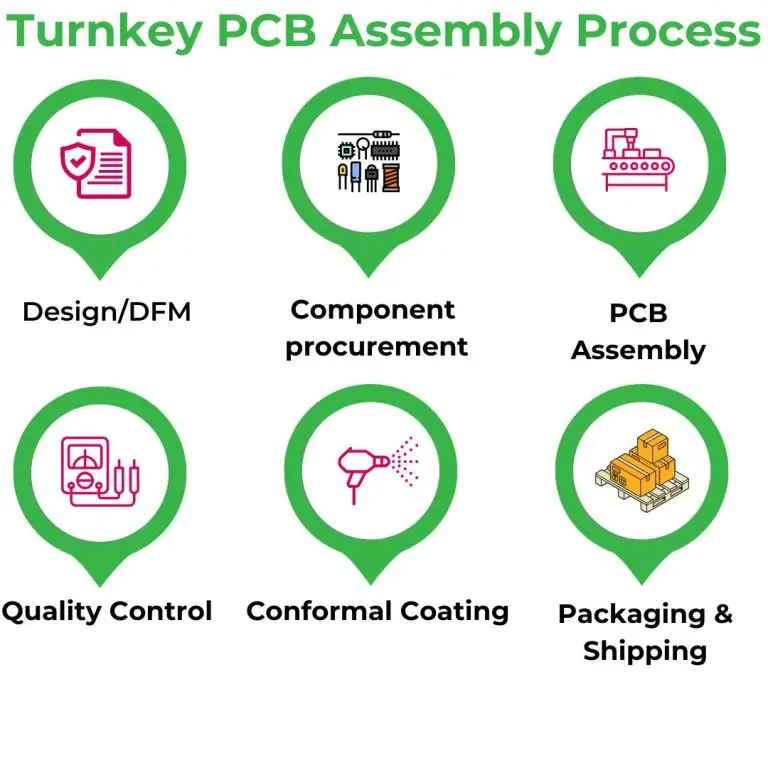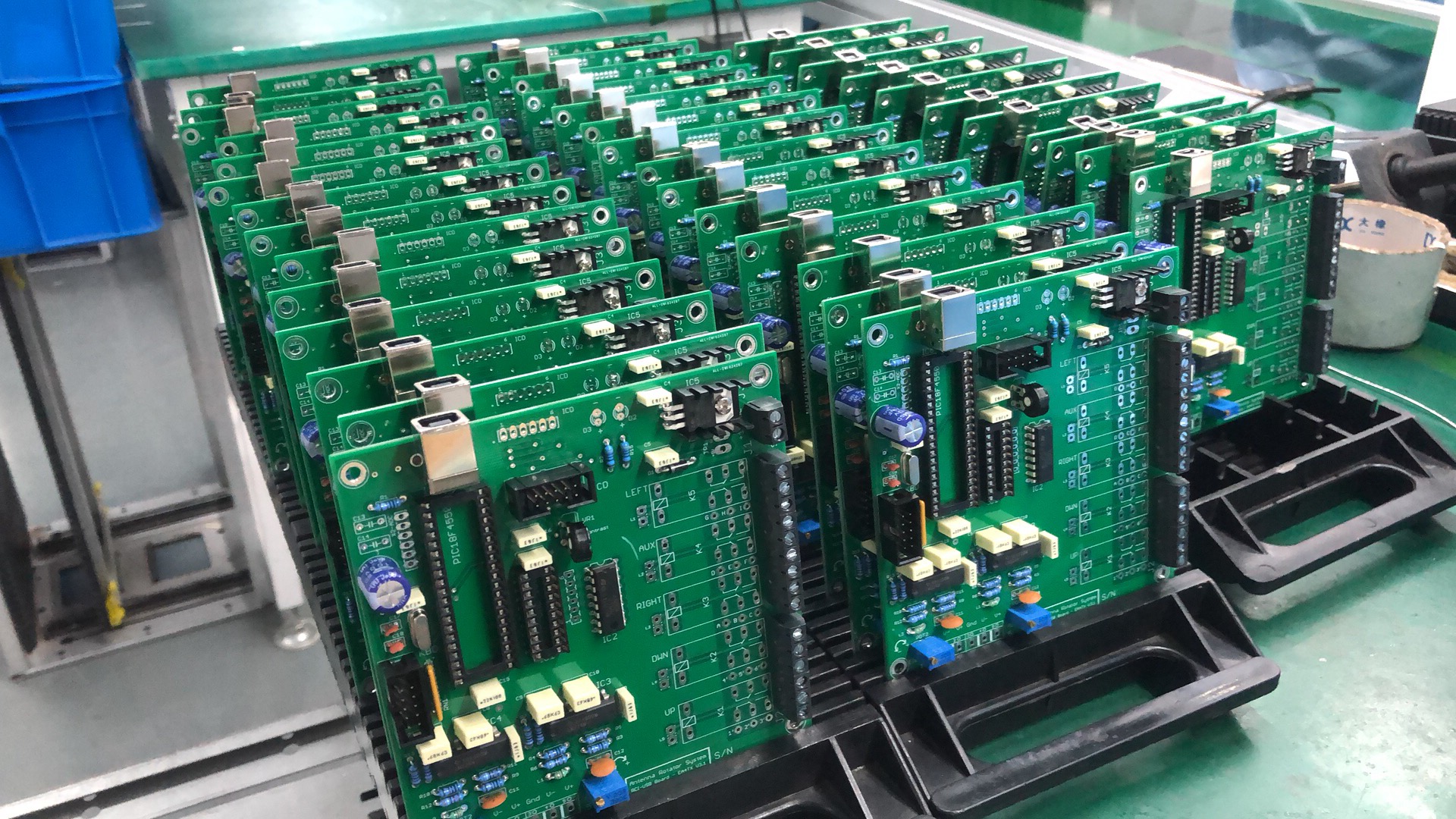In the fast-paced world of electronics, getting a product from concept to market efficiently is a top priority for engineers and buyers alike. One term that frequently comes up in this process is "turnkey PCBA service." But what exactly does it mean, and why is it so valuable in modern manufacturing? At its core, a turnkey PCBA (Printed Circuit Board Assembly) service is a one-stop solution where a single provider handles everything—from sourcing components to assembling and testing the final board—delivering a ready-to-use product. This approach saves time, reduces complexity, and ensures quality, making it a game-changer for businesses of all sizes.
For engineers juggling tight deadlines and intricate designs, or buyers seeking cost-effective production without the hassle of managing multiple vendors, understanding turnkey PCBA services can unlock significant advantages. In this blog, we'll break down what turnkey PCBA service entails, explore its benefits, and explain how it works in practice. Whether you're prototyping a new device or scaling up production, this guide will equip you with the knowledge to make informed decisions.
What Does "Turnkey" Mean in PCBA?
The word "turnkey" originally comes from construction, where a project is handed over ready for immediate use—just turn the key and start operating. In the context of PCBA, "turnkey" refers to a service where the provider takes full responsibility for the entire process of creating a PCB assembly. This includes designing (if needed), fabricating the bare PCB, procuring components, assembling them onto the board, and performing quality checks like testing and inspection. Once complete, the board is delivered fully functional, ready to be integrated into your product.
Unlike traditional assembly methods, where you might source parts from one supplier, fabricate the board with another, and assemble it with a third, turnkey PCBA consolidates all these steps under one roof. Think of it as outsourcing the heavy lifting: you provide the design files (like Gerber files and a Bill of Materials, or BOM), and the service provider delivers a finished product. This streamlined approach is especially appealing to engineers who need to focus on innovation rather than logistics.

The Key Components of Turnkey PCBA Service
To fully grasp what turnkey PCBA service offers, let's break it down into its core stages. Each step is critical to delivering a high-quality, functional board.
1. Design Support and Review
While not always included, many turnkey providers offer Design for Manufacturability (DFM) checks. This step ensures your design is optimized for production, catching issues like trace widths that are too narrow (e.g., below 0.1 mm for standard processes) or impedance mismatches that could affect signal integrity (e.g., a 50-ohm controlled impedance for high-speed signals). By addressing these early, you avoid costly rework later.
2. Component Procurement
Sourcing components can be a headache—think lead times of 8-12 weeks for specialized ICs or price fluctuations for capacitors during shortages. In a turnkey service, the provider leverages their supply chain relationships to secure parts like resistors, microchips, or connectors at competitive rates, often faster than you could independently. For example, a turnkey provider might source a 10 µF ceramic capacitor for $0.05 each in bulk, compared to $0.15 from a distributor for small orders.
3. PCB Fabrication
This stage involves creating the bare board from your design files. The provider etches copper traces (typically 1 oz/ft² or 35 µm thick for standard boards), drills vias (e.g., 0.3 mm diameter for through-holes), and applies solder masks. Advanced turnkey services can handle multilayer boards—say, a 6-layer PCB with a stack-up designed for 100 MHz signal speeds—ensuring precision and reliability.
4. Assembly
Here's where the magic happens: components are placed and soldered onto the board. Surface-mount technology (SMT) handles tiny parts like 0402 resistors (1 mm x 0.5 mm), while through-hole technology (THT) secures larger components like connectors. Automated pick-and-place machines can position up to 100,000 components per hour, followed by reflow soldering at temperatures around 245°C for lead-free solder.
5. Testing and Quality Assurance
No board leaves the facility without rigorous checks. Automated Optical Inspection (AOI) scans for solder joint defects, while In-Circuit Testing (ICT) verifies electrical connectivity—ensuring, for instance, a 3.3V power rail is stable. Functional testing might simulate real-world conditions, like a 1 GHz signal through a trace, to confirm performance.

Types of Turnkey PCBA Services
Not all turnkey services are identical—they come in flavors to suit different needs. Here's a look at the main types:
Full Turnkey PCBA
This is the complete package: the provider handles everything from start to finish. You submit your Gerber files, BOM, and any test requirements, and they deliver a fully assembled and tested board. Ideal for startups or engineers with limited resources, full turnkey minimizes your involvement.
Partial Turnkey PCBA
In this hybrid model, you supply some components—perhaps a custom microcontroller you've already sourced—while the provider handles the rest, like fabrication and assembly. This is great if you want control over critical parts but still need logistical support.
Consignment Assembly
Technically not full turnkey, consignment involves you providing all components, and the provider focuses solely on assembly and testing. It's less common in turnkey discussions but worth noting for comparison.
Each type offers flexibility depending on your project's scope, budget, and timeline. For instance, a prototype run of 10 boards might lean toward partial turnkey to test specific components, while a 1,000-unit production run benefits from full turnkey efficiency.
Benefits of Turnkey PCBA Service
Why choose turnkey PCBA over managing the process yourself? The advantages are clear and impactful for engineers and buyers.
Time Savings
Coordinating multiple vendors can delay a project by weeks. With turnkey, a single provider cuts lead times significantly—think 7-10 days for a prototype versus 4-6 weeks with separate suppliers. Early DFM checks also prevent delays from design errors.
Cost Efficiency
Turnkey providers often secure bulk pricing on components and eliminate extra shipping costs between vendors. For example, shipping parts to an assembler might cost $50 per shipment; with turnkey, that's absorbed into the service. Labor costs drop too, as you don't need an in-house team for procurement or assembly.
Simplified Management
Dealing with one point of contact reduces miscommunication. Instead of juggling emails with a fabricator, distributor, and assembler, you get updates from a single source. This clarity keeps projects on track and reduces stress.
Quality Assurance
With everything under one roof, turnkey providers maintain strict control over the process. A board failing ICT due to a 0.1-ohm short can be traced back and fixed immediately, rather than bouncing between vendors to pinpoint the issue.
Scalability
From prototypes to mass production, turnkey services adapt seamlessly. A provider might assemble 5 boards for testing today and 5,000 next month, all with consistent quality and optimized processes.
When Should You Use Turnkey PCBA Service?
Turnkey PCBA isn't a one-size-fits-all solution—it shines in specific scenarios. Here's when it makes the most sense:
-
Prototyping: Need a quick proof-of-concept? Turnkey delivers fast, letting you test a design (e.g., a 2-layer board with 0.8 mm pitch BGA) without building an assembly line.
-
Small to Medium Runs: For batches of 10 to 1,000 units, turnkey avoids the overhead of in-house production while keeping costs manageable.
-
Complex Designs: Multilayer boards with high-speed signals (e.g., 10 Gbps differential pairs) benefit from a provider's expertise in fabrication and testing.
-
Resource Constraints: Startups or small teams lacking procurement staff or equipment can lean on turnkey to stay competitive.
For massive production runs (e.g., 100,000+ units), you might consider in-house options or hybrid models, but turnkey remains a strong contender for flexibility.
Challenges and Considerations
While turnkey PCBA offers clear benefits, it's not without challenges. Here's what to watch for:
-
Upfront Costs: Full turnkey can seem pricier initially due to bundled services, though it often balances out with savings elsewhere.
-
Vendor Dependency: Relying on one provider means their delays or errors impact you directly. Vet their track record—look for ISO 9001 certification or a 98% on-time delivery rate.
-
Limited Control: You might have less say over component brands or assembly tweaks. Clear communication of specs (e.g., "use 1% tolerance resistors") mitigates this.
Choosing a reliable partner is key. Check their capabilities—can they handle 01005 components (0.4 mm x 0.2 mm) or HDI PCBs with 0.1 mm vias?—and ensure they align with your needs.
How Turnkey PCBA Fits Into Modern Electronics
In today's electronics landscape, speed and reliability are non-negotiable. Turnkey PCBA aligns perfectly with this demand, supporting industries like IoT, automotive, and medical devices. For example, an IoT sensor board with a 32-bit MCU and 2.4 GHz RF module can go from design to deployment in weeks, not months, thanks to turnkey efficiency. As supply chains grow more volatile—think chip shortages pushing lead times to 20+ weeks—turnkey providers' established networks become even more valuable.
For engineers, this means more time refining designs (e.g., optimizing a 4-layer PCB stack-up for 5G signals) and less time chasing parts. For buyers, it's a predictable, cost-effective path to market.
How ALLPCB Enhances Turnkey PCBA
When it comes to turnkey PCBA, partnering with a provider like ALLPCB can elevate your project. We specialize in quick-turn prototyping—delivering assembled boards in as little as 24 hours for simple designs—while our global logistics network ensures components arrive on time, even amidst shortages. Our advanced manufacturing facilities handle everything from 2-layer prototypes to 30-layer HDI boards, with precision testing like X-ray inspection for BGA placements. Whether you're an engineer racing to validate a design or a buyer scaling production, ALLPCB's end-to-end service streamlines the process, letting you focus on what matters: building innovative, reliable products.
Conclusion: Is Turnkey PCBA Right for You?
So, what is turnkey PCBA service? It's a comprehensive, hassle-free solution that takes your PCB from design to reality with minimal effort on your part. By consolidating procurement, fabrication, assembly, and testing, it saves time, cuts costs, and ensures quality—perfect for engineers and buyers under pressure to deliver. Whether you're prototyping a new gadget or launching a mid-sized production run, turnkey PCBA offers a practical path forward.
Evaluate your project's needs: Do you need speed? Simplicity? Scalability? If so, turnkey could be your answer. Partner with a provider who matches your technical demands—be it high-speed signal integrity or ultra-small components—and watch your ideas come to life faster than ever.

 ALLPCB
ALLPCB







